You are using an out of date browser. It may not display this or other websites correctly.
You should upgrade or use an alternative browser.
You should upgrade or use an alternative browser.
We made a scrub plane
- Thread starter Andrea
- Start date

Help Support UKworkshop.co.uk:
This site may earn a commission from merchant affiliate
links, including eBay, Amazon, and others.
Hello everyone,
I follow your forum very often but I never posted because of my difficulty with English language. Here I hope I make myself understood with the help of google translator.
Thanks for appreciating our work. The arc welder was used only to close the screw holes. All the rest are clinched joints and rivets.
Richard T, when will we see finished your beautiful planes?
Pekka Huhta, you're right, I got the idea from you and now I thank you.
Ciao Vittorio
I follow your forum very often but I never posted because of my difficulty with English language. Here I hope I make myself understood with the help of google translator.
Thanks for appreciating our work. The arc welder was used only to close the screw holes. All the rest are clinched joints and rivets.
Richard T, when will we see finished your beautiful planes?
Pekka Huhta, you're right, I got the idea from you and now I thank you.
Ciao Vittorio
Richard T
Established Member
Hi Vitto and welcome.
Your English is much better than my Italian.
I hardened the first iron today. .... lots of fettling to do. More soon.
Richard
Your English is much better than my Italian.
I hardened the first iron today. .... lots of fettling to do. More soon.
Richard
I spotted this thread title and wrongly assumed it might have been a ropey wooden effort. I'm glad I clicked and got chance to see the amazing plane you've made - it looks fantastic !!! 
Coley
Sent from my GT-I9300 using Tapatalk
Coley
Sent from my GT-I9300 using Tapatalk
RossJarvis":q8y68hy5 said:That's what I was assuming. Having read about possible issues where thinner irons aren't "fully supported"
I was just wondering if the user found the plane worked well with this type of support only. I think Bugbear has now pointed out that the important element is support near the cutting edge.
I bought an old thick tapered blade in Uk and I think it works well, without chattering, but I must admit that I do not have a lot of experience with scrub planes to properly judge.

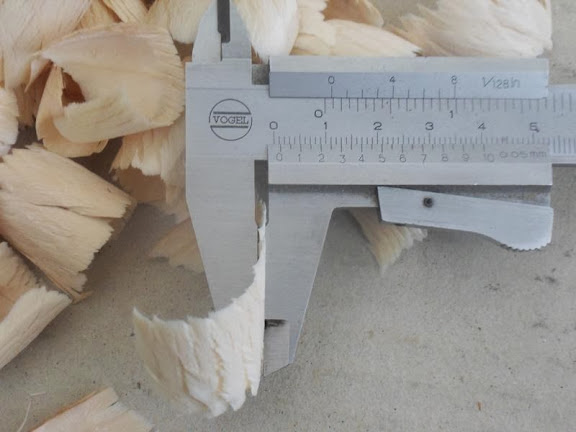

£49.91
£58.33
Mefape Mortise and Tenon Jig Tools for Woodworking Routers, Tenon Cutter, Manual Mortising Machine, Invisible Slotting Machine Jig Stand, 3-Axis Guide Rail for Adjust Trimming Length and Width
wangshijuntianjinhongyuegongyipin

£9.99 (£1.00 / count)
£14.45 (£1.44 / count)
JSP M632 FFP3moulded Disposable Dustmask (Box of 10) One Size suitable for Construction, DIY, Industrial, Sanding, dust protection 99 Percent particle filtration Conforms and Complies to EN 149
Amazon.co.uk

£24.99
Facemoon Reusable Masks,Safety Masks,Dual Filter Masks, Paint, Dust, Epoxy Resin, Construction, Welding, Sanding, Woodworking, Chemical Reusable Gas Masks
ShenZHEN CIRY MINGYANG LITIAN ELECTRONIC ECOMMERCE

£15.99 (£1.60 / count)
£27.44 (£2.74 / count)
3M 8822 Disposable-fine dust mask FFP2 (10-pack)
Amazon.co.uk

£10.19 (£0.39 / count)
£11.99 (£0.46 / count)
Nicpro Carpenter Pencil with Sharpener, Mechanical Carpenter Pencils Set with 26 Refills, Case, Deep Hole Marker Construction Pencils Heavy Duty Woodworking Pencils for Architect (Black, Red)
NicproShop EU

£16.99
£19.99
Respirator Mask,Safety Dust Face Cover,Dust Face Cover Paint Face Cover,Gas Mask With Filter,For Paint,Dust And Formaldehyde,Sanding,Polishing,Spraying And Other Work
ShenZHEN CIRY MINGYANG LITIAN ELECTRONIC ECOMMERCE

£10.10
£15.48
Portwest Browguard with Clear Visor, Size: One Size, Colour: Clear, PW91CLR
Amazon.co.uk

£34.99 (£3.50 / count)
£39.99 (£4.00 / count)
VonHaus Chisel Set - 10pcs Woodworking Tools Set - Wood Carving Tools, Wood Chisel Sets with Sharpening Stone, Honing Guide and Storage Case
VonHaus UK

£199.00
£360.17
Trend Portable Benchtop Router Table with Robust Construction for Workshop & Site Use, 240V, CRT/MK3
Amazon.co.uk
Jacob
What goes around comes around.
It's a scrub plane so chatter doesn't matter. Thick shavings are good but sometimes you might want a wider but thinner shaving, depending on what you are scrubbing.
On a rough old bit of timber like this one a narrow deep cut is best:

PS very easy to sharpen freehand, no great precision or accuracy is called for. I really wouldn't bother struggling with a jig it will just make it more difficult. No flattening required, back bevel OK to make it easier.
Very nice plane BTW!
On a rough old bit of timber like this one a narrow deep cut is best:

PS very easy to sharpen freehand, no great precision or accuracy is called for. I really wouldn't bother struggling with a jig it will just make it more difficult. No flattening required, back bevel OK to make it easier.
Very nice plane BTW!
Yep, lovely plane! I have the same blade (Herring) that I use in a woodie. NOS from the well known seller on the auction site.
The first mm or so of that blade was seriously hard, until I got back to what felt like normal carbon steel. It's a very good blade.
The first mm or so of that blade was seriously hard, until I got back to what felt like normal carbon steel. It's a very good blade.
AndyT":14b50knp said:Brilliant work.
I thank you for the appreciation and I take this opportunity to thank all the others who have complimented with me.
There's nothing like the satisfaction of solving all those practical problems and getting through to a very smart end product.
Yes, yes, you really hit the mark.
I especially like the dovetailed toe on the handle
It is sort of trademark for me, I do this kind of evident repair even when I have to repair a saw handle.
http://langolodispogliainferiore.blogsp ... d-saw.html
Code:
and the neatly spaced hand filing on the blade-holding screw.It was the first time I built a knob out of iron. I started with a three-square needle file, then I switched to a small hacksaw and then back to a triangular needle file, but I was not satisfied with the result so I ended up with a round needle file.
My Italian is not up to reading the text, but looking at the pictures, do I see signs of the delicate kiss of the arc welder ?
Yes, we used an arc welder to close the threaded holes for the handles rods and to fill some deep unwanted hammering marks.
I had always assumed that all this dovetailing and riveting was because welding would distort the plane too much - if not, could a fully welded construction work ? I assume not, as noone seems to try it.
I'm not sure, but I think the explanation is the one that you wrote.
Richard T":3hzwold1 said:Adjustable frogs, when moved forwards to tighten the mouth, leave the iron dangling unsupported by the sole. This sole and frog are solid McSolid.
The iron is supported under the pressure of the lever cap at the business end and where the screw screws down. A very neat idea. The frog rivets in the sole support both.
CC - indeed, a very lucky scrub plane.
Vittorio was very glad to read your comments. And me too.
Pekka Huhta":wqyqolke said:Brilliant plane, congratulations. Lovely work and brilliant ideas on all of the small details.
Thank you very much, also from Vittorio.
I happened to notice the lathe you have there: all the details are not visible, but it looks very much like that one: http://www.sihistin.fi/en/woodwork/lathe.html . Or did I see it right?
My lathe is much, much worse than the one you linked. It is only an angular grinder against a drill. But please don't tell it to the person in charge for the on safety on the work.
RossJarvis":1h9k618v said:Tell your friend and yourself that we are all mightily impressed (and I'm a little jealous).
I'll do it.
Please can we see the next one in fuchsia to compare :lol:
Since my friend Vittorio is building another one for himself, I'll propose him your suggestion. ;-)
In any case, if you want to see something like that, a while ago I painted a plane in lilac:
http://www.legnofilia.it/viewtopic.php?f=6&t=7904
Jacob":13c7qh26 said:PS very easy to sharpen freehand, no great precision or accuracy is called for. I really wouldn't bother struggling with a jig it will just make it more difficult. No flattening required, back bevel OK to make it easier.
As I said previously I have sharpened this blade freehand with a (double) convex bevel. Although I'm not used to sharpen freehand, It was not a long or difficult task. But I could not get a sharp edge like when I sharpen with a guide (it cut arm hair the same, but less easily).
Very nice plane BTW!
Thank you very much you too.
MIGNAL":wxc6775k said:The first mm or so of that blade was seriously hard, until I got back to what felt like normal carbon steel. It's a very good blade.
Considering the time it took to prepare the back, I also think its a good steel.
bugbear
Established Member
Andrea":3arssgai said:bugbear":3arssgai said:I would recommend checking out my page on flattening - I sincerely believe that rubbing a plane on sandpaper on a flat surface is not the quickest or most accurate way to flatten a sole.
Thank you for the links. I'm very intrigued by scraping metals, but I have never experienced it.
However I think that a scrub plane does not need a great accuracy in surface flattness.
Read my page again - I state (repeatedly!) that scraping is too slow; it's the "print-cut" that I recommend.
BugBear
bugbear
Established Member
bugbear":37nl9e3m said:Oh, that's very neatly done!
Yes, thanks, but i doesn't work. :-(
When I incline the guide to sharpen the corners of the blade, the bottom edges of the guide casting touch the stone before I can reach the corners of the blade.
First I had shortened the bars and the threaded rod and then I also filed a bit the bottom edges of the guide casting, but probably not enough.
Now or I have to file a lot more these edges or I have to use a wheel with a larger diameter.
The problem is that I think that the original wheel is in tempered steel and I do not own tempered steel and in any case I'll not be able to bore it and also I'm not able to temper steel.
I tried twice to make a larger wheel with soft iron, but the result was always some off-axis holes. The fact is that with my minimal set of tools, I also need some luck to have accurate resulst The luck assisted me in the crowning of the original wheel that came out quite perfect, but in two attempts to make two larger wheels, it has abandoned me.
Now I wonder whether it's worth continuing to work on the modification of the Eclipse clone, since with my freehand sharpening the blade cut anyhow quite well. With quite well I mean that the freehand sharpened sharp blade cuts yes my arm hair, but not with the same ease with a blade sharpened with a guide.
In the next step I will try to file more the bottom edges of the guide casting if it will not work, I think I'll abandon this task.
Maybe I will propose to both LV and LN to add a cambered wheel to Eclipse clones honing guides that they are designing.
In the first picture is showed the radius of curvature, but was determined only after the crowning work, it is not a number that I designed before. So it does not means anything.
I know that my English is not that great, so I hope I did not write nonsenses. If necessary, please, fill with good sense what you have not understood.
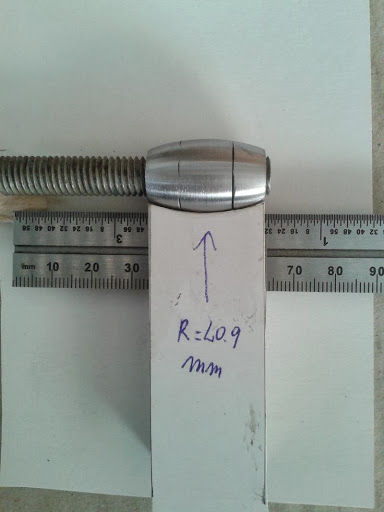
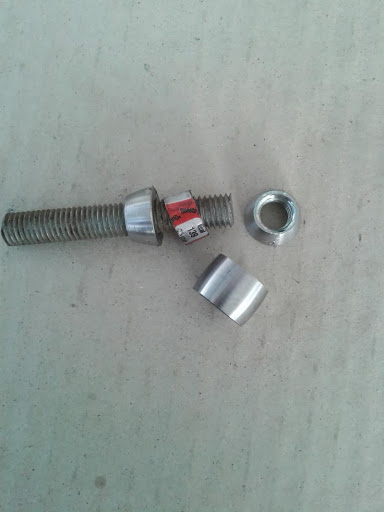
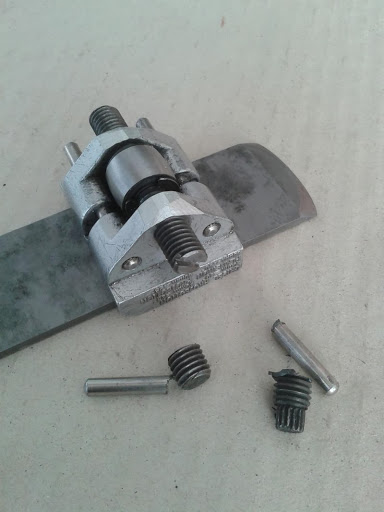
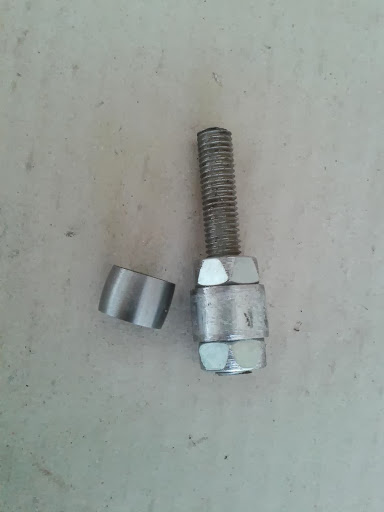
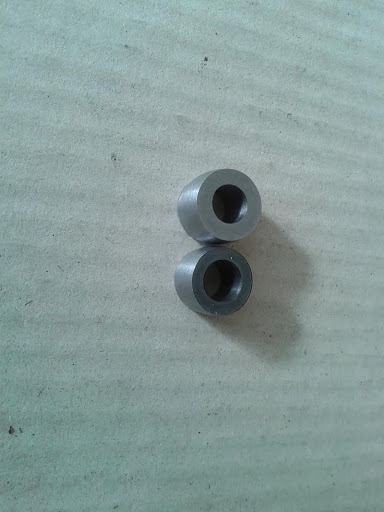
Jacob
What goes around comes around.
Well I did say!
Sharpening a narrow cambered scrub blade freehand is exceptionally easy. Trying to use a jig is particularly difficult.
Sharpening a narrow cambered scrub blade freehand is exceptionally easy. Trying to use a jig is particularly difficult.
Similar threads
- Replies
- 5
- Views
- 2K























